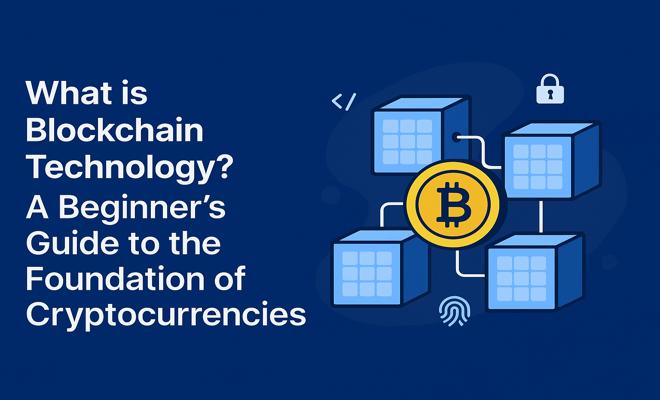
🔰 What is Blockchain Technology? A Beginner’s Guide to the Foundation of Cryptocurrencies
🚀 Introduction: Why Everyone is Talking About Blockchain
In recent years, blockchain technology has captured the world’s attention. From powering cryptocurrencies like Bitcoin to revolutionizing supply chains and digital identity, this innovation is reshaping industries. But what exactly is blockchain, and why is it so powerful? This beginner's guide breaks it all down for you in simple terms. 🧠
🔗 What Exactly is Blockchain?
At its core, a blockchain is a digital ledger — a record of transactions or data — that is distributed across many computers. Unlike traditional databases, it doesn't rely on a central authority. Instead, everyone in the network shares the same data, and any changes must be agreed upon by the network. This decentralized structure is what makes blockchain secure and transparent. ✅
🧱 How Does Blockchain Work?
Here's how blockchain technology works in a nutshell:
- Blocks: Data is stored in blocks. Each block contains a list of transactions.
- Hashing: Each block is linked to the previous one via cryptographic hashes, forming a "chain."
- Consensus: Before a block is added, participants (nodes) must agree that the data is valid, using consensus mechanisms like Proof of Work or Proof of Stake.
Once added, data in a block cannot be changed without altering all subsequent blocks — a nearly impossible task. 🔐
🕵️♂️ Public vs. Private Blockchains
There are two main types of blockchains:
- Public Blockchains: Open to everyone. Examples include Bitcoin and Ethereum. Anyone can read or write data, although consensus must be achieved.
- Private Blockchains: Controlled by a single organization. They're faster and more scalable but less decentralized.
✅ Benefits of Blockchain Technology
- Decentralization: No central authority or single point of failure.
- Transparency: Every participant has access to the same data.
- Security: Cryptography protects data from tampering.
- Efficiency: Automates and speeds up processes like payments and auditing.
- Trust: Builds trust among participants without needing intermediaries.
🌍 Real-World Applications of Blockchain
Blockchain isn’t just for cryptocurrencies. Some exciting use cases include:
- 📦 Supply Chain Management
- 🏥 Healthcare Data Records
- 🗳️ Transparent Voting Systems
- 🎨 NFTs and Digital Art Ownership
- 💳 Decentralized Finance (DeFi)
⚠️ Challenges and Limitations
Like any technology, blockchain has its limitations:
- Scalability issues and slow transaction speeds ⏳
- High energy consumption in Proof of Work networks 🔋
- Complexity and steep learning curve for beginners 📚
- Regulatory uncertainty ⚖️
📈 Blockchain and the Future of Finance
Blockchain is already disrupting traditional finance by enabling peer-to-peer transactions, removing intermediaries, and creating new models like DeFi. Many experts believe it will become a core part of the global digital economy. 🌐
🧠 Final Thoughts for Beginners
Blockchain technology may seem complex at first, but at its heart, it's a powerful tool for creating trust in the digital world. Whether you’re investing in crypto, developing apps, or just curious, understanding blockchain is a smart move for the future. 💡
📘 Glossary of Key Terms
- Block: A container for data/transactions in a blockchain.
- Hash: A unique code that links blocks securely.
- Consensus Mechanism: A process for validating transactions.
- Node: A computer that participates in the blockchain network.
- Smart Contract: Self-executing code stored on the blockchain.